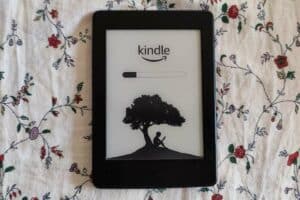How to Get Interested in Reading? [The Complete Guide!]
Disclosure: This post may contain affiliate links. – meaning I may get a commission if you decide to purchase through my links, at no additional cost to you.
You may be a reading enthusiast but have a friend or a loved one who you want to encourage to start reading. Or, perhaps you want to learn the skill yourself! No matter the situation, the key question is where do you start? What do you need to do to get interested in reading!
Generally speaking, a good way to get interested in reading is to start with books on topics that interest the reader. Choose a book that is easy to read and comprehend. Set a fixed schedule to read and avoid distractions. Perhaps, join a club where you can share and discuss the book that you read!
In this article, we’ll discuss the possible reasons why a person may not be interested in reading. Plus, I will provide you with a few additional tips that will help you with this journey and become a regular reader.
The tips that I mention in this article can be applied to get your partner interested in reading or for yourself! One thing to note here is that although we specifically discuss aspects related to the reading of printed books, most of the tips are also applicable for reading on a screen.
Note – the most efficient way to get interested in reading would be to start with Audible where you can hear the books instead of reading them! Click on the link to get a one-month FREE trial of Audible!
What are the Benefits of Reading?
The writer W. Somerset Maugham is quoted quite frequently when the benefits of reading are discussed. He said: “To acquire the habit of reading is to construct for yourself a refuge from almost all the miseries of life.” This is enough reason for many to develop good reading habits!

When reading actively and enjoying it, your right brain gets involved in the reading process. The right hemisphere of your brain is responsible for cognitive functions such as attention, emotion, verbal ambiguity, and implied meanings. When you are reading, you stimulate your right brain, and its functions are enhanced.
George R.R. Martin, the author of the “Game of Thrones” books, once wrote, “A reader lives a thousand lives before he dies…The man who never reads lives only one.”
If this is not a good enough reason, you may want to check out my other article that talks about the benefits of reading and why it is good for you!
Why Do People Dislike Reading?
There are several reasons why people may dislike reading.
Some have never enjoyed reading at school and now can’t associate reading with having fun. It may be possible that they’ve probably read boring books in school. However, they must remember that schools often want to regulate what their students read, and the books they have to read don’t represent the wide range of available reading material.
Others believe that reading takes too much time and effort. There are also people who just never have been in a reading-friendly environment.
You may blame the lack of interest in reading on our technology age where almost everything is available digitally. However, it is interesting that some research shows that the opposite can also be true.
According to a Shenzhen Institute of Information Technology research, computer-aided teaching has become an indispensable part of teaching. But the same research shows that this computer-aided teaching can also improve the interest of students in reading professional books.
I’ve covered all the various reasons why people dislike reading in a separate article. In case you want to get to the bottom of the problem, you may want to consider reading the other article.
How to Get Interested in Reading?
The best way to get people interested in reading is to entice them to read a book on a topic or in a really interesting genre for the said person.
After an interesting book has been read and the reader has experienced it as something enjoyable, or at least helpful if it has been a book regarding the person’s line of work, you’ve crossed the first bridge.
Crossing this first stage is usually the hardest. It only gets easier as you go along.
The next bridge is to entice the new reader to read the next book, and the final bridge has been crossed when the new reader doesn’t need you anymore to keep on reading.
There are various ways of getting someone to read, but the next few tips have proved to help many non-readers to become interested in reading books.
Tip 1: Determine What the Person Would Like to Read
To get somebody interested in reading, you have to determine what the person would find interesting to read. Let the person decide what type of book will interest him or her.
It may be a non-fiction book about, as an example, the person’s line of work, or about history, finance, or current affairs. If the person has decided on finance, for instance, try to find out what will be the most interesting for the person, e.g. financial planning, investing, or stock markets.
If the person is unable to decide (which is mostly the case), ask them what hobby would they have pursued in their free time (no, watching TV is not an acceptable answer). Allow them some time to think through the answer. It is okay if he or she doesn’t have the answer right away.
Another question I’ve seen works really well is this – what would you do when you had all the time in the world and no responsibilities? (which is a variation of the above question)
Usually, the first couple of answers might be superficial desires. Don’t ignore them, but be cognizant of this fact. But, after 10 to 15 minutes, you will most definitely have at least one answer.
(Note – you can do the same exercise if you want to get yourself interested in reading!)
Now, choose a suitable book.
Tip 2: Choose a Suitable Book

The next step is to do your research and find an applicable book. If a new reader starts with a book that is difficult to comprehend the person’s brain gets tired quickly. The new reader will then find many excuses for not reading any further. Thus, start with a book that is easy to understand.
Sometimes, people may share a particular hobby that they are interested in such as baseball, or camping and survival, or traveling. If that is the case, don’t just pick up any novel or a book that got you reading. Find a book that has aspects of what they love!
For instance, if it is baseball, find a book that has crazy facts about baseball! If it’s camping and survival, perhaps choose a thriller where the story is based around camping. Similarly, for travel, look for a book where the main protagonist has moved to a different country and the book shares the experiences of living in that country!
Remember – This first step is the most important. If you cross this bridge, it is a lot easier to persuade them to read the next book!
Tip 3: Market the Book
The next step is to market the book before you hand it to them. Get them interested in the book even before you hand it over to them. Talk about the time and effort you’ve put in to find just the right book for them.
Your goal is the convince them to start reading. So it doesn’t matter if it is the topic of the book that gets them interested, or if it is the emotional connect that pulls them in, you need to cross the first bridge to make this work!
Tip 4: Read the Book Aloud at First
Another thing that can help is to read the book out loud.
To get started, you may perhaps want to read the book out loud for your partner at first. First-time readers or new readers usually struggle to read at a good pace and comprehend the book. Furthermore, often they are skeptical whether the contents of the book will really pique their interest!
Thus, when you read the first few pages of the book out loud, it builds momentum and often at least gets the person interested!
Tip 4: Propose Set Reading Times
Suggest to the new reader to have one or more set times during every day when he or she will be able to read undisturbed for at least about 10 minutes.
If the new reader can as an example fit in 10 minutes between breakfast and going to work, another 10 minutes before dinner, and the last 10 minutes when going to bed, 30 minutes of reading is being done every day. This is a great start for a daily reading habit.
Explain to new readers that the setting of reading times is only to get into the habit of reading every day, and if one or more of the set times are skipped due to circumstances, it is nothing to feel guilty about.
Tip 5: Provide a Healthy Reading Environment

In addition to the reading schedule, it is important to create a congenial environment for reading. Provide a nice warm and quiet place for reading.
To enjoy reading sessions new readers can have some good tea or coffee while reading, and they must always be comfortable when reading.
Tip 6: Discuss the Book with the Reader
This is a very important ongoing part of the process to get someone interested in reading. Make sure that initially you also read, or get an overview of the book. Discuss the content with the new reader as the person is reading through the book.
By discussing the book, the new reader can share ideas and comments. Not only will certain aspects of the book become clearer for new readers when books are discussed, but they will discover that a book can be the basis of interesting conversations.
Tip 7: Don’t Force New Readers to Finish a Book They Don’t Like
People sometimes feel they have to finish a book even when they don’t like it. New readers often start with a book that they discover is not what they want to read. By keeping on reading this “wrong” book the new reader develops a further aversion to reading rather than a love of it.
In your discussions with the new reader, you’ll pick it up if it is not the right book for the person. Suggest another book and start with the new one immediately. When the “right” book is discovered the new reader will start to enjoy the reading sessions.
It is generally accepted that if a fiction book doesn’t hook you within the first 50 to 60 pages, it is better to put it down and start a new one. This definitely should be a good rule of thumb, especially for new readers.
Tip 8: Get an Audiobook Version
With the advent of technology, book readers now have an option to listen to a book rather than just read it! This can actually work really well for a certain set of people.
For some people, it is the act of reading which is tiring and boring; not necessarily the content of the book. This may happen for multiple reasons such as the pace of the reader is too slow.
An easy way to overcome this problem would be to get them started with audiobooks! What’s interested with audiobooks is that sometimes you not only get the audio files but also the book itself to go with it. This way, the reader can listen to the book and also read it along.
Tip 9: Join a Book Club
It is entirely possible that the person you want to take up reading stays with you. If that is the case, it is easy to follow the tips that I’ve mentioned in this article.
But, what if it is your friend who doesn’t really stay in the same house? A good way to solve this issue is to find a book club for them to join.
Book clubs can be great not just to discuss the questions once the book is completed, but also to encourage people to continue reading.
Perhaps, an even better thing to do would be to identify a book cafe; a place where reading books is encouraged and the reader get easy access to good food and beverage!

About the Author
Akansha is a former business journalist and a seasoned communications professional. She is the founder of TheBookBuff, an avid storyteller, and a lifelong biblophile! Check out her profile page to know more about Akansha.


![What Charger Does Kindle Use? [Full List Version-Wise!]](https://thebookbuff.com/wp-content/uploads/2022/04/Depositphotos_442067778_XL-copy-300x200.webp)


![How to Find Your Kindle Email Address? [The EASY Way!]](https://thebookbuff.com/wp-content/uploads/2021/11/high-angle-view-of-woman-at-home-sitting-on-couch-2021-08-29-19-37-12-utc-optimized-300x200.webp)
![Transfer Books From One Kindle to Another? [Step-by-Step]](https://thebookbuff.com/wp-content/uploads/2021/11/reading-books-gadget-kindle-ebook-reading-with-kindle-kindle-book_t20_8dKzk6-300x200.webp)